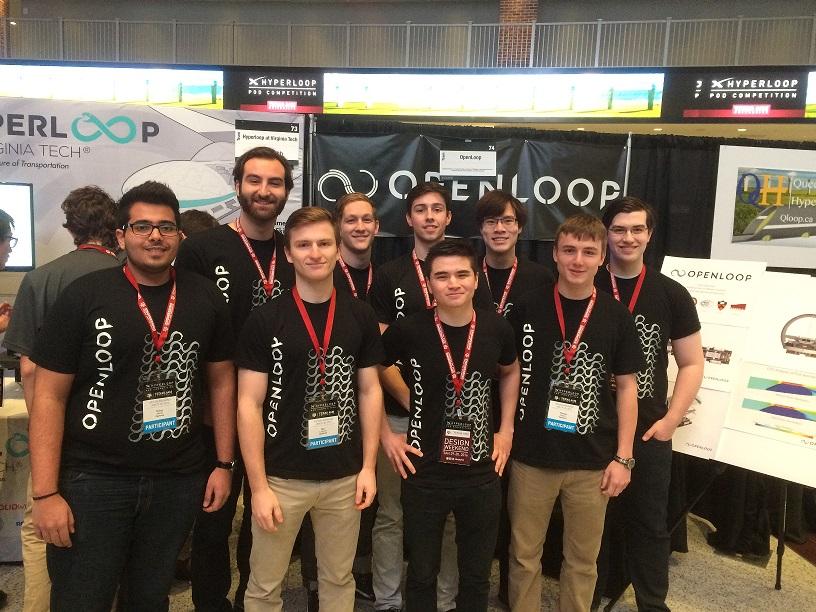By Cassidy DeStefano, news editor
A coalition of six universities is unveiling a model this June for billionaire Elon Musk’s transportation system brainchild, the hyperloop.
If successful, these high-speed, air-powered vehicles will be the first of their kind, according to club founder and third-year computer engineering major Trenton Couture.
“It will travel at roughly the speed of sound and run completely on solar energy,” Couture said of the hyperloop. “These will be the first ones ever built because the actual companies that are building them for industrial use won’t be done for another few years.”
OpenLoop, a partnership between Northeastern University (NU), Cornell University, Princeton University, University of Michigan at Ann Arbor, Harvey Mudd College and Memorial University of Newfoundland, is one of 31 teams competing for a $50,000 grant in the final stage of the Hyperloop Pod Competition, hosted by Musk’s company, SpaceX.
“The hyperloop basically works off of the idea that the main problem with transportation is air resistance,” team leader Milan Vidovic, a third-year mechanical engineering and physics double major said. “With this technology, you’re in a tube that’s almost a vacuum, and in the full-scale design, there aren’t any wheels. There are just magnets and air skates.”
Vidovic and eight other NU students collaborated with their 150-person team to submit a design packet for the pod in November’s Design Weekend at Texas A&M University.
“Our final design packet was 50-plus pages, and it covered everything from air volume and flow throughout the system to the fuselage computational fluid dynamics,” OpenLoop contributor and third-year mechanical engineering major William Rahgeb said.
From there, SpaceX representatives picked the most promising designs to send to the last round in California, which affords each team one chance to launch its pod on the course.
“The biggest issue in design is that you really only get one shot to send it down the track,” Couture said. “Most technologies allow you the opportunity to fail a few times, but we don’t really have that leniency.”
Still, he said that the OpenLoop team remains optimistic as it aims to upgrade its plans before the final test.
“It’s honestly great because you get so many different inputs,” Vidovic said. “We’ll have a problem here at NU and we’ll get input on how to improve it tenfold. Since we have so many schools, we have so many resources and advisers backing us.”
He added that the concept of the hyperloop could potentially be the most groundbreaking transportation innovation since the airplane in the 1940s.
“If this is something that could ultimately be implemented on a large scale, it would be revolutionary,” Rahgeb said. “It would make the trip from Boston to New York a reasonable commute. The whole dynamic of people moving from rural areas to cities could be turned upside down because everything would be more accessible.”
Senior mechanical engineering major Alanna Ferri was initially part of the OpenLoop team, but left when she was accepted as a top-ten finalist for NASA’s Breakthrough, Innovative and Game-changing Idea Challenge. Still, she attested to the transformative power of hyperloop technology.
“If the team proves that the hyperloop can be built, it will change transportation now and in the future,” she said. “It’ll make the world a smaller place.”
Photo courtesy Trenton Couture, OpenLoop









